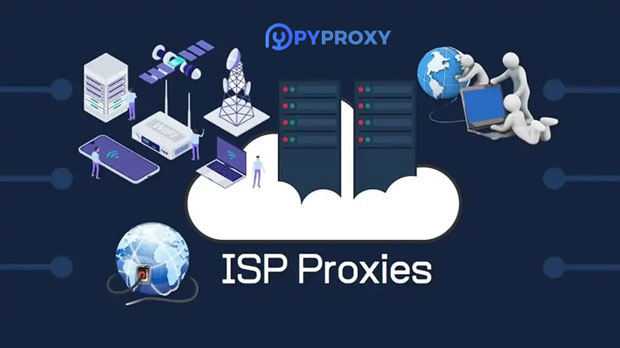When considering ISP (Internet Service Provider) proxies, customers often face a dilemma: balancing the price with the desired stability and anonymity. While lower-priced proxies may seem appealing, they can come with compromises in speed, security, and consistency. On the other hand, high-priced proxies are likely to offer greater stability and enhanced anonymity, making them ideal for high-demand tasks, but they also come with a premium cost. Understanding this relationship can help customers make more informed decisions based on their specific needs—whether it’s for online security, data scraping, or accessing restricted content. This article explores the intricate balance between ISP Proxy price, stability, and anonymity, providing valuable insights for those seeking the best value in proxy services. 1. Introduction to ISP ProxiesISP proxies are essential tools for individuals and businesses that need to hide their identity, bypass geo-restrictions, or maintain a stable internet connection for various online activities. By masking the user's IP address, ISP proxies serve as an intermediary between the user's device and the internet. They are typically used for privacy, security, or to improve the stability of internet connections during data-intensive tasks. However, not all proxies are created equal. Their performance, pricing, and the level of anonymity they provide can vary significantly depending on several factors, which we will explore in detail.2. Price and Its Impact on Proxy QualityPrice plays a pivotal role in determining the quality of ISP proxies. Generally speaking, the more expensive the proxy, the better the service it is likely to provide. High-priced ISP proxies tend to have the following characteristics:- Higher Bandwidth and Speed: Premium proxies often come with better bandwidth, allowing users to enjoy faster internet speeds. This is essential for activities like data scraping or streaming, where speed is critical.- Better Infrastructure: Premium proxies are hosted on more robust servers, leading to a more stable and consistent connection. This reduces the likelihood of frequent disconnections or downtime.- Fewer Users per Proxy: Higher-priced proxies often limit the number of users sharing the same proxy, which reduces congestion and leads to better performance.On the other hand, cheaper ISP proxies often come with compromises. They may have limited bandwidth, slow speeds, and less reliable connections, making them unsuitable for high-demand activities. Therefore, customers need to weigh the trade-offs between cost and quality when choosing ISP proxies.3. The Role of Stability in ISP Proxy ServicesStability is one of the most crucial aspects of ISP proxies, especially for businesses and individuals who rely on continuous access to the internet. Stability refers to the ability of the proxy to provide a consistent connection without interruptions. A stable proxy ensures that the user’s internet connection remains uninterrupted, even during high-traffic periods or when accessing content from remote servers.Expensive ISP proxies tend to offer better stability for several reasons:- Dedicated Resources: High-end proxies usually provide dedicated resources, which results in fewer performance issues such as lag or connectivity drops.- Advanced Load Balancing: Premium proxies are often equipped with load balancing technology, which ensures that the proxy servers distribute traffic efficiently to prevent overloads. This ensures that users do not experience slowdowns during peak times.- Redundancy: Higher-priced proxies often come with backup servers in place. If one server goes down, traffic is redirected to another server, ensuring continuous service.Cheaper ISP proxies, however, may suffer from instability due to oversubscription, where too many users share the same proxy, causing slower speeds and frequent disconnects.4. Anonymity and Its ImportanceAnonymity is one of the primary reasons people use ISP proxies. By masking the user’s original IP address, proxies allow individuals to browse the internet without revealing their location or identity. However, the level of anonymity can vary depending on the type of proxy and its pricing.- High-Quality Proxies and Anonymity: Premium proxies are designed with advanced anonymity features. They offer better encryption, ensure no logs are kept, and employ techniques like IP rotation to further mask the user’s identity. As a result, high-priced proxies provide a higher level of protection against online tracking and surveillance.- Low-Quality Proxies and Anonymity: Inexpensive proxies often do not have strong privacy protections. They may leak information, such as the real IP address, or fail to encrypt traffic effectively, leaving users vulnerable to attacks. Additionally, cheap proxies are more likely to be blacklisted by websites and services due to their poor reputation, compromising anonymity.For users who prioritize security and privacy, investing in a high-quality ISP proxy that provides robust anonymity features is crucial. This is especially true for activities like accessing sensitive information or circumventing geo-restrictions on streaming services.5. Price vs. Stability and Anonymity: The Balancing ActThe relationship between price, stability, and anonymity is a delicate balancing act. Here are some key points to consider:- For Budget-Conscious Users: If the budget is a concern, it’s important to focus on finding the best value rather than opting for the cheapest option. While low-cost proxies may suffice for basic browsing or low-demand tasks, they may not deliver the desired level of stability or anonymity.- For High-Demand Users: Businesses, data analysts, or individuals with specific needs, such as secure browsing or web scraping, will likely need to invest in more expensive proxies. These proxies offer superior speed, stability, and anonymity, making them essential for tasks that require high performance.- For Privacy-Focused Users: If anonymity is a top priority, premium proxies are highly recommended. They offer strong encryption and IP rotation features that help maintain the user's privacy while browsing.6. Conclusion: Making the Right ChoiceIn conclusion, when selecting an ISP proxy, it is essential to understand the interplay between price, stability, and anonymity. High-priced proxies typically offer better stability and more robust anonymity, making them ideal for high-demand or privacy-sensitive tasks. However, for those on a budget, it’s possible to find reasonable options that strike a balance between cost and performance, though some compromises may be necessary. Ultimately, the best choice depends on the specific needs of the user, whether that be high-speed internet, secure and anonymous browsing, or a reliable connection. By considering the key factors outlined in this article, customers can make more informed decisions and find the right ISP proxy for their requirements.
Nov 13, 2025



































































